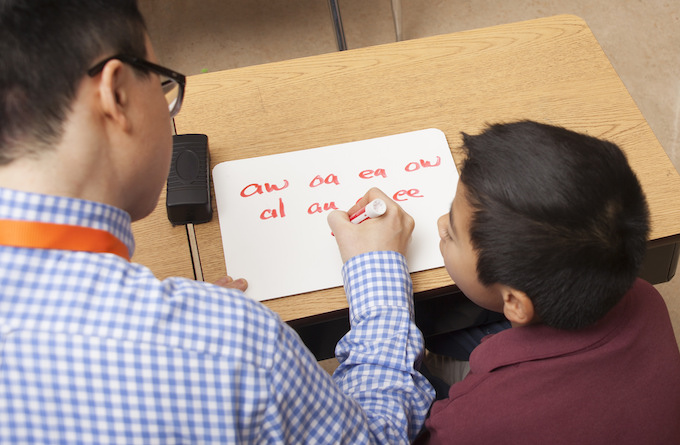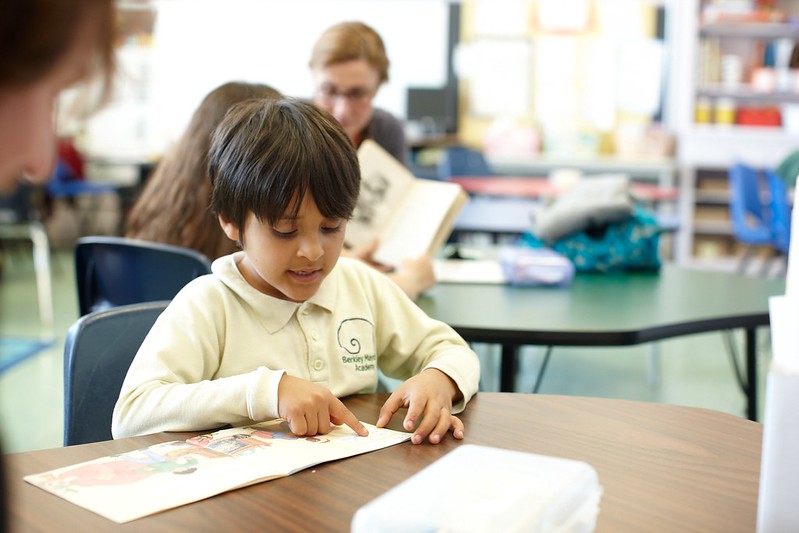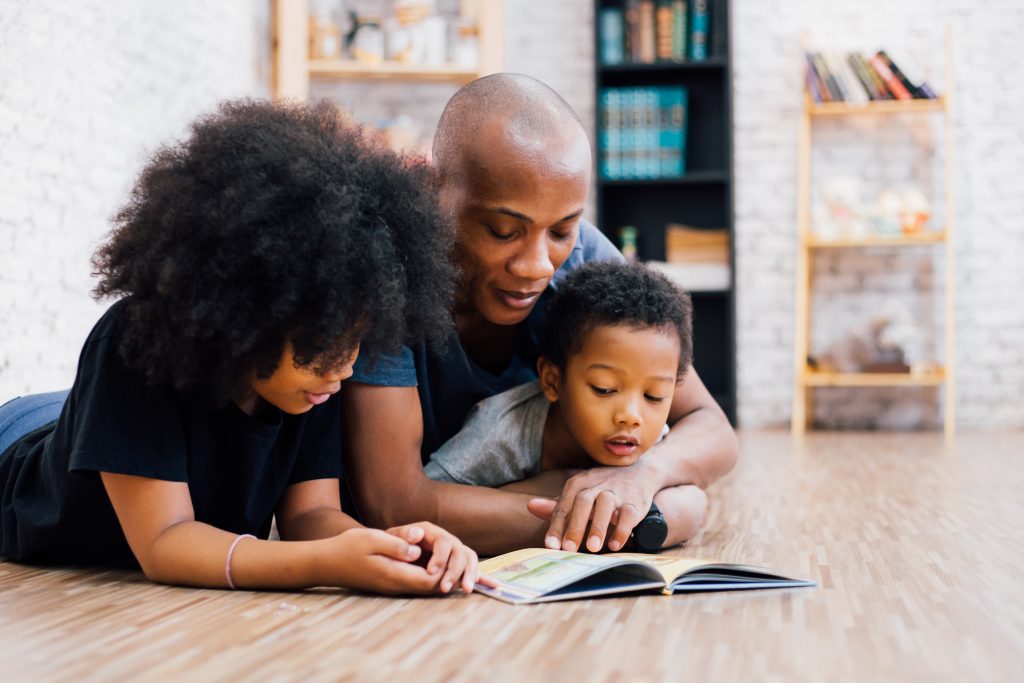Do you remember the picture books that first brought you joy? The ones that were read to you before you could read, or the ones that sparked your imagination for the first time? When you think about these stories what do you see?
For most of us, we might see our favorite characters or the enchanting setting of our childhood books. We see the illustrations brought to life through our memories.
Picture books bring tremendous benefits to kids who are in the early stages of developing their reading skills. Illustrations shown alongside text offer invaluable tools to help kids build understanding, fluency, vocabulary and other foundational literacy skills. The imagery in a picture book brings the pages to life, serving as a visual roadmap for the story.
Here are five important benefits picture books bring to children who are learning to read.
1. Build language skills

As kids begin to speak and build sentences, they learn to recognize sounds and patterns within spoken language. This is known as phonological awareness and serves as the foundation for learning to read. The rhythmic cadence of many picture books helps kids develop and practice phonological awareness. Kids may start by repeating passages of their favorite picture books, then go on to make up their own similar rhymes or stories.
Dr. Seuss’ ABC: An Amazing Alphabet Book! is a picture book that helps build phonological awareness while practicing letter sounds. “Big A little a, what begins with A? Aunt Annie’s Alligator. A…a…A.”
At a most basic level, picture books help kids understand that words convey meaning—connecting the pictures in the book with the words on the page. Kids will check pictures on the page for background knowledge or contextual clues for vocabulary development. They even use the images to learn the names of new objects.
You can ask a child, “Can you show me where the alligator is on this page?” or “What letter does the word alligator start with?”
2. Identify sequence

By organizing the sequence of events in a story, kids can practice their ability to comprehend what they read. Mastering this skill starts with identifying beginning, middle, and end, and summarizing key events that take place (in order) throughout the story.
Visual aids and illustrations remind the reader what happened throughout the story and support their ability to confidently retell the key events. As kids hone their sequencing skills, let them look at the pictures to remind them what happened in the story. If they guess, and guess incorrectly, then use it as an opportunity to re-read the passage. This offers a chance to do an additional check for understanding.
Furthermore, books filled with pictures encourage kids to make predictions and inferences about what’s going to happen next. They can pair the words with the expressions and setting shown in the pictures to make an informed guess about what comes next in the story.
In Miss Nelson is Missing!, readers can infer that Ms. Viola Swamp is Miss Nelson in a costume. Clues in the book, such as the coincidental timing of Miss Nelson’s disappearance and the appearance of Ms. Swamp help lead to this inference.
As you read a book with a child, you are both likely making inferences throughout. The key to helping kids realize when they are making an inference is to talk through the inferences out loud throughout the book. Take breaks to ask questions: “How does Miss Nelson feel when kids misbehave in class?”, “Why do you think Ms. Viola Swamp was outside of Miss Nelson’s house?”, “What do you think happened to Miss Nelson?”.
3. Improve comprehension

There’s a lot to learn on the road to becoming a skilled reader. Along with sequencing and summarizing, there are many other essential skills kids must master in order to comprehend the text they read. Some of those skills include; sentence construction, problem solving, comparing and contrasting, drawing conclusions, inferring, and more.
Books rich with illustrations and photos offer many benefits to help enhance reading comprehension. Here are just a few of those benefits.
- Pictures provide visual clues to help us discover more about the narrative.
- Pictures show expressions, unwritten details, setting, and context that help us compare and contrast. These details allow us to analyze more complex details of character development.
- Illustrations can provide important background knowledge and offer contextual cues based on what’s happening in the story. This helps us “read between the lines” to find meaning that may not be explicitly stated in the text.
4. Spark a love of reading

When you think about your favorite childhood book, what comes to mind? You may see a sparkling fish with rainbow colors or a tree that gives everything in the name of selfless affection. Maybe you see your favorite characters or other-worldly settings.
The illustrations of a picture book can be enchanting, fun, and inspiring. They can tell a story of their own. Many of us remember picture books as the books that made us first fall in love with reading.
One key ingredient of picture books that we shouldn’t discount is the benefit of pictures in sparking joy and creating a fun and engaging reading experience for kids. Picture books do a better job of holding the attention of kids learning to read than books without pictures. And reading picture books with kids on a regular basis (ideally daily) can help them self-monitor their behavior until they can sit through a whole story and focus on the events.
When kids enjoy particular books or stories, they may ask to read the same book again and again. This is a good sign that this book sparks interest and intrigue for a young reader. Let kids choose the stories they love, read them often, and offer options to explore new books as well.
5. Boost social-emotional learning

The subject matter in picture books can introduce social cues and cultural differences that encourage social-emotional development. Books that model social behaviors help hone social language skills and reinforce positive behavior.
In the book The Name Jar, a young Korean girl living in America is teased about her name, Unhei. A passage from the book reads, “She was relieved that the kids on the bus had gone to other rooms, but her face still felt red.” Marked by this bullying, she decides to search for a different name. Throughout the story her classmates and family show gentle kindness, support, and encouragement for Unhei until she is ready to introduce herself and her culture, as Unhei, to the rest of her classmates.
The Name Jar offers a chance for kids to practice empathy for Unhei and observe the outcome of kind, encouraging behavior compared to the negative effects of bullying.
Picture books also explore difficult subjects like fear, grief, taking risks, building friendships, self-control, and so much more. These books offer outlets for kids to explore challenging subjects in a format that’s approachable to them.
The illustrations in a book can help kids relate to the characters and setting portrayed. Picture books featuring protagonists of different identities, races, cultures, and abilities allow kids to relate to the texts where they see their own image reflected back. Furthermore, #ownvoices books written from the perspective of an author who shares a certain identity can provide an experience that’s profoundly relatable to kids’ differing experiences.
For example, Grace for President, allows young girls of color see themselves as future leaders in positions of power.





